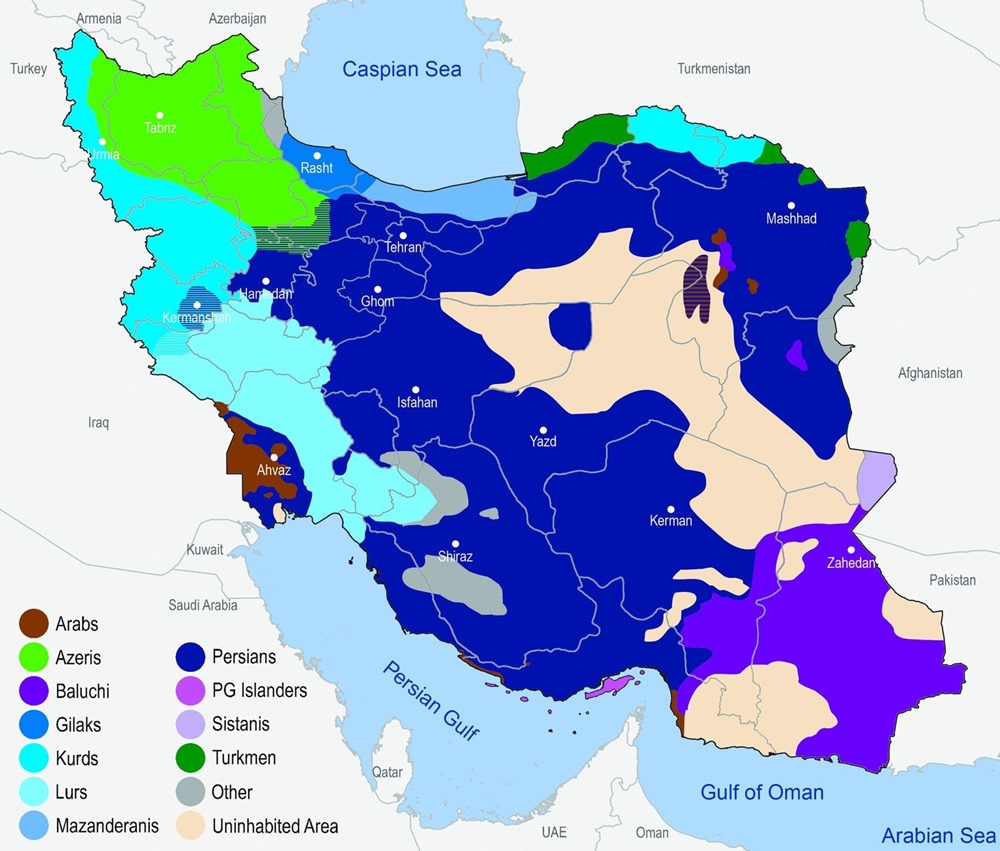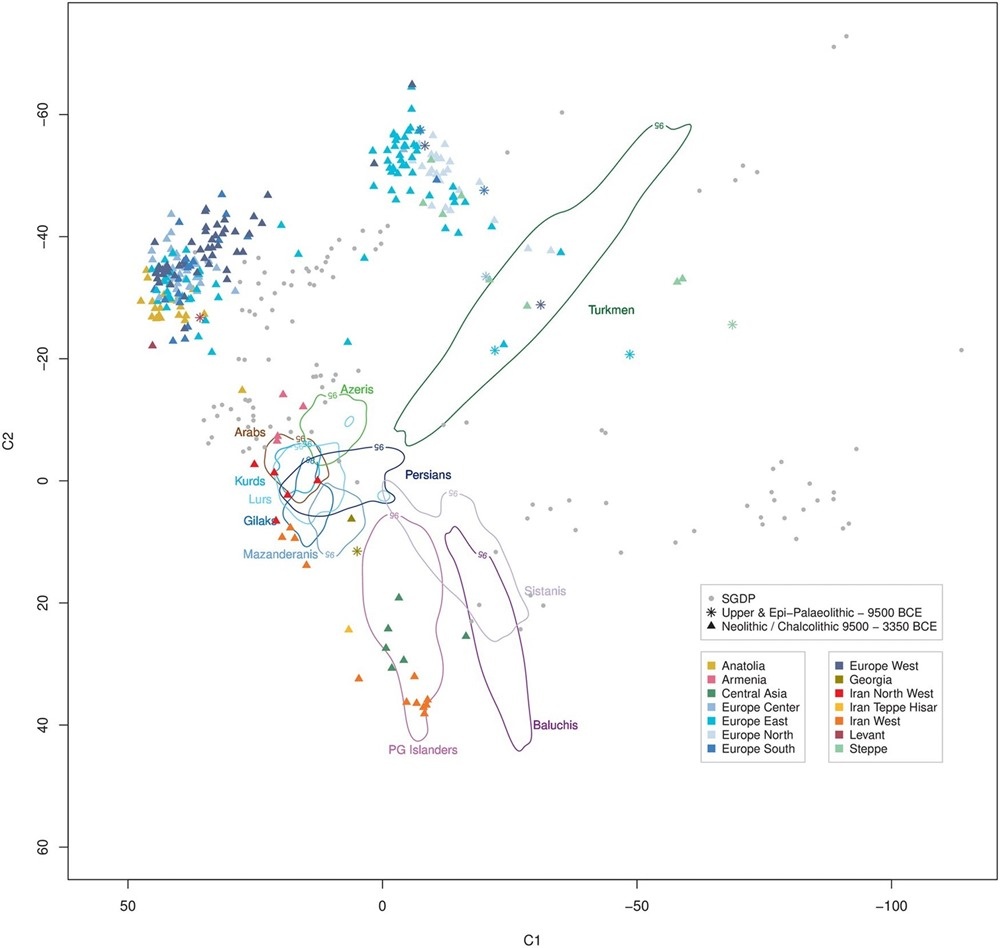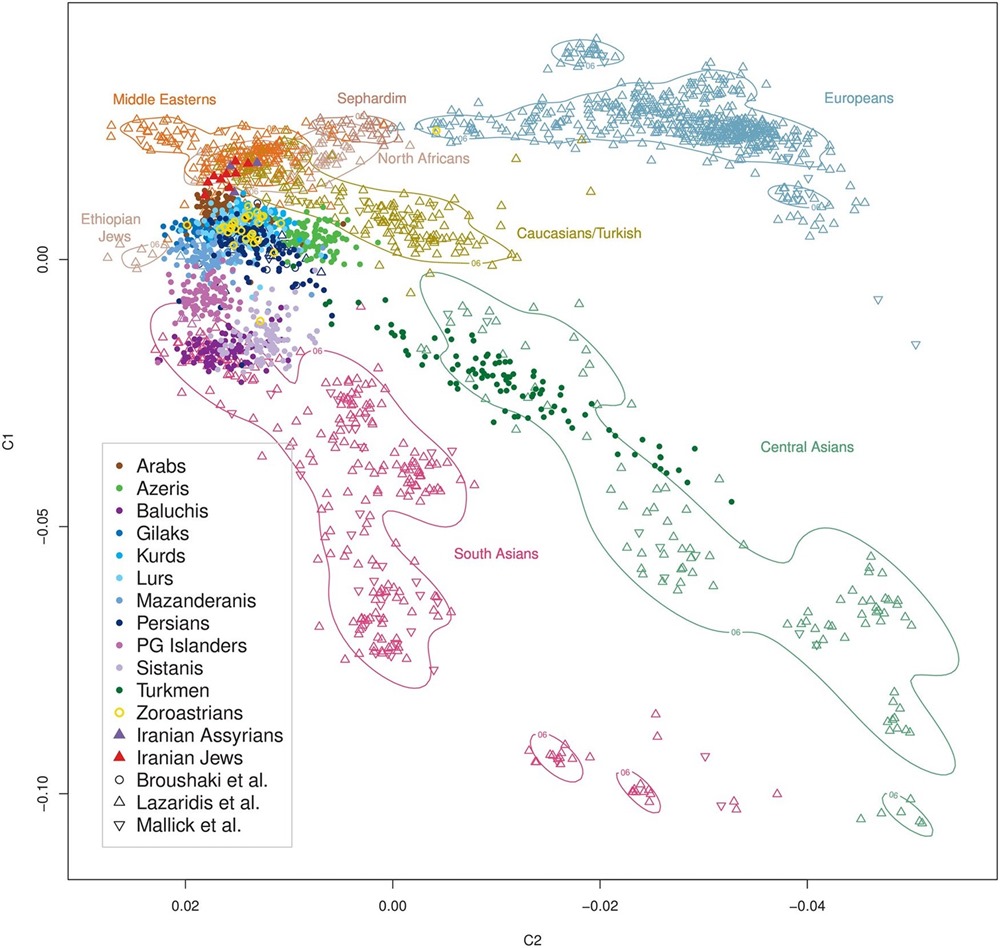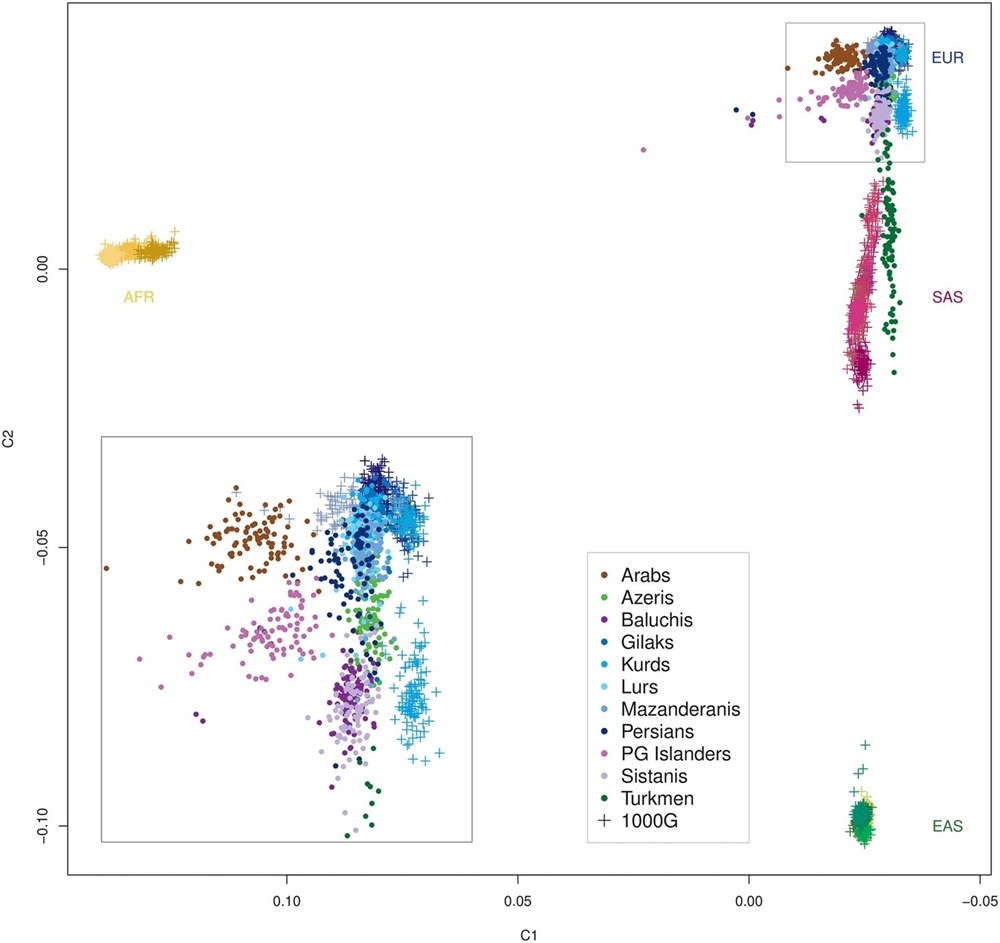In a landmark study, a team of international researchers with unrestricted access to local populations and fossilized genetic material in Iran, led by scientists from the University of Cologne (Germany) and the University of Sydney (Australia), identified the genetic profile of the Iranian people and their genetic relationship with one another and the neighboring populations.
Article by Jr Rezvani | Afterwords
The research studied major (Persians, Azerbaijanis, and Kurds) and minor (Arabs, Balochis, and Persian Gulf Islanders) Iranian ethnic groups and 800 excavated fossilized specimens from individuals who lived in the Central Iranian region thousands of years ago.
Iranian populations are clustered with 4 separate groups: European, Turkic, Semitic, and South Asian (Pakistani)
The primary findings of the genome study: Iranian Persians and Kurds exhibit high in-group genetic variation which is larger than that of Germans in Western Europe. However, the entire gene pool has remained largely unchanged over the past 10,000 years.
Tuscans (TSI) share a substantial proportion of ancestry with Iranians, particularly those from the CIC. Explicit modeling of 0–15 migration events clearly shows the robustness of the close clustering of all Iranian groups, with Europeans always closest to the major Iranian groups (Persian, Kurd, and Azerbaijani).
Iranian Kurds have strong genetic overlap with Persians indicating a common background & little admixture. Persian Gulf Islanders repeatedly received an influx of groups from outside Iran. This is consistent with historical reports of ongoing sea trade over the past millennia.
Central Iranian Cluster (Persians) and North West cluster (Azerbaijanis) are genetically closer to Europeans than they’re to Balochis and PG Islanders. North East clusters (Turkmen) are closer to Turkic Central Asians than to CIC Iranians.
South Western clusters (Iranian Arabs and PG Islanders) are closer to the Semitic group of the Middle East. South Eastern clusters (Balochis) are genetically closer to Pakistani South Asians.
The Persian Zoroastrian exiles in coastal South Asia (Parsi) are genetically more closer to individuals (fossilized) who lived in the Central Iranian region more than 10,000 years ago than Iranians living in the Central Iranian cluster now. This probably makes them the most ancient specimen of Persian people!




